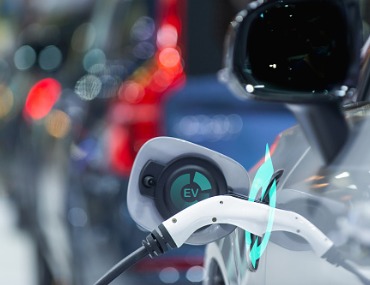

Latest Research
December 08, 2025
U.S. East Coast Office CRE Recovery: Running at Different Speeds
The recovery of East Coast office commercial real estate (CRE) is uneven. Miami and Tampa are ahead, though recent signs of softening have appeared. New York and Charlotte have made progress. In New York, office space absorption is up, driven by return-to-office trends. Charlotte’s gains reflect robust employment growth. D.C. and Boston continue to struggle. High vacancies and weak demand persist. Boston’s elevated pipeline will likely delay recovery, with its vacancy rate set to climb higher in the near term. Miami’s construction pipeline is also elevated, but much of the new supply is pre-leased, limiting risk.
December 05, 2025
Assessing the Feasibility of President Trump’s Tariff Dividend Checks
President Trump has recently proposed sending out $2,000 ‘tariff dividend checks’ to eligible households, which would be funded using tariff revenue. However, the administration has not provided further details on the structure, timing or income testing thresholds, making any sort of economic inference very speculative.
December 04, 2025
The Days Of Our Lives
Yes, the title of this presentation comes from a famous soap opera. It’s appropriate to depict the past year, full of economic and political drama. We’re on the cusp of closing out 2025, a dramatic 365 days marked by the shifting sands in government policies and corporate behaviors. And this final quarter of the year has brought forward more pivots on both sides of the border that will keep us glued to the next episode. My only hope is that the economic drama doesn’t run sixty-three seasons like the soap opera!
November 19, 2025
Fractured Supply Chains & U.S. Contingency Planning: Rare Earth Minerals
The threat of China curtailing exports of rare earth minerals has been on the radar of policymakers in D.C. for the better part of a decade, but China’s monopoly over the industry limited the pool of viable alternatives. Now in 2025, as trade relations between the world’s two largest economies have deteriorated, China has opted to apply strategic pressure to a vital nerve in global supply chains.
November 05, 2025
Global Trade Disrupted: Early Impacts of U.S. Tariffs
The dramatic increase in U.S. tariffs in 2025 has led to volatility in the trade data that makes it difficult to analyze trends. Despite these distortions, there is early evidence that underlying growth in U.S. imports has slowed.
October 30, 2025
Easing Rates, Limited Relief: U.S. Housing’s Gradual Recovery
Home sales are stuck near the lows reached during the Global Financial Crisis, as elevated interest rates and economic uncertainty continue to restrain activity. We see a bit more room for mortgage rates to fall by next summer, which alongside some fiscal tailwinds from the One Big Beautiful Bill Act and more certainty on the trade front, should lead to pick up in sales activity.
October 22, 2025
The Economic & Fiscal Impacts of U.S. Defense Spending in 2026 and Beyond
The Trump administration is expected to front-load defense appropriations included in the One Big Beautiful Bill Act in fiscal year 2026, driving defense spending above $1 trillion (+15% year-on-year). We expect this to boost real GDP growth by 0.2 percentage points next year, with a larger gain in 2026 inhibited by existing production and labor capacity constraints.
September 25, 2025
U.S. Government Shutdown Risks: 2025 Edition
As has become commonplace in recent years, the federal government is once again at risk of a shutdown to kick off the new fiscal year on October 1st. There is still time for an agreement to be reached in Congress, but the current deadlock in Congress warrants consideration for what would happen should an agreement not be reached by next Wednesday.
September 16, 2025
U.S. Consumer Spending Loses Altitude as Policy Turbulence Spikes
U.S. consumer spending has lost momentum. Inflation-adjusted consumption has been flat since December and growth is expected to remain sub-par through the middle of next year amid heightened economic uncertainty, a slowing labor market, higher inflation and other headwinds.
September 11, 2025
Stablecoins Enter the Mainstream
Stablecoins are shifting from crypto-asset trading tools to a regulated part of the U.S. financial system, laying the groundwork to reshape the payments system. Digital stablecoin technology, with its potential for programmability and transparency, could make payments—especially cross-border transactions—faster, cheaper, and more reliable, benefiting remittances, business-to-business (B2B) payments, trading, and compliance processes. The recently passed GENIUS Act requires U.S. payment stablecoins to be fully backed by safe, liquid assets and strict audits, aiming to anchor trust and prevent past failures that shook confidence in the sector.
September 09, 2025
Economists’ Almanac Predicting Another Warm Year for U.S. Inflation
Higher tariffs have been slow to materialize in U.S. consumer prices. The stop-and-start rollout of trade policies, inventory stockpiling and a substitution away from highly tariffed Chinese goods have helped to mitigate the impact on goods inflation. However, these forces will play less of a role moving forward.
September 02, 2025
Tails We Win, Heads You Lose
The U.S. has been disruptor of itself. Whether it be to its own business cost structures and trade flows with tariff policies, or labor force dynamics with uncertainty and immigration policies. And yet, it’s paying a lower economic cost relative to peer countries. That gave rise to the title: Tails we win, heads you lose. I’ll explore the resilient features of the domestic economy, making sure to distinguish the narratives we hear from the data we see.
August 18, 2025
U.S. Manufacturing and the Future of the Labor Force
President Trump aims to bring manufacturing jobs back to America. To do this, he’s employing several tools, including the widespread use of tariffs. This strategic push raises several questions on the industry’s capacity to absorb more production and expand the labor market, which we explore in this report.
July 24, 2025
A Sea of Changes in Student Debt Market To Ramp Up Pressure on Borrowers
Student loans have been gradually returning to business as usual after prolonged pandemic relief programs. Most recently, credit reporting and unpaid debt collections have resumed, leading to a jump in delinquencies, and an increase in defaults on the horizon.
June 23, 2025
Weathering the Storm – the Next Phase of America’s Cost of Housing Crisis
There is growing evidence that extreme weather events are on the rise and becoming more costly to Americans. This calls for increased adaptation and mitigation efforts. Many financially constrained households in the U.S. are vulnerable to the rising risks of flood and wildfire.
May 29, 2025
Peeling Back the Layers to the Florida Condo Market Weakness
Florida’s housing market had a strong run in the years following the pandemic and its condominium sector was no exception. But this positive narrative has seen a dramatic shift over the last few quarters. While the overall housing market has softened, in tune with national trends, Florida’s condo sector remains on much weaker footing with both sales and prices down considerably from their recent peaks.
May 28, 2025
North American Auto Outlook 2025: Trade Headwinds to Stall Industry
At the start of 2025, the automotive industry was looking forward to another year of healthy sales growth, aided by affordability improvements from lower financing costs and continued solid gains in real household income. However, less than halfway through the year we have seen several aggressive trade policies announced by the new U.S. administration which are expected to weigh on the outlook over the coming years.
May 12, 2025
Clipped Wings: Impact of Reduced Tourism on the U.S. Economy
The dramatic policy shifts by the new adminsitration in Washington appear to be having a notable impact on travel. Both domestic and international travel are showing signs of strain. Evolving U.S. policies and stricter border security have prompted travelers to cancel or delay their trips, with overseas arrivals to the U.S. were down by about 12% year-over-year in March, with reductions observed across most regions.
May 06, 2025
Choppy Waters for the Barrel - Crude Oil Update
Oil prices continue to be pressured lower as erratic U.S. trade policy weighs on global economic growth at the same time that OPEC+ is boosting global oil supply. The price for WTI crude has shed over 20% since early last month to almost $55/bbl, the lowest level in over four years.
May 01, 2025
The Non-Starter Playbook of the Mar-a-Lago Accord
The Mar-a-Lago Accord is a blueprint to recreate the Plaza- Accord-style intervention of decades prior, designed to correct the U.S. trade deficit through deliberate dollar weakening. The current composition of the U.S. trade deficit, particularly the concentration with China, sheds light on the administration's rationale for tariffs.
April 16, 2025
Tariff Policy and Whiplash Weaken U.S. Growth Outlook
The U.S. administration imposed a 90-day pause on reciprocal tariffs, dropping all countries (excluding China) to a flat 10% tariff. This comes in addition to the sectoral tariffs, including steel & aluminum and finished autos & parts. We estimate the effective tariff rate in the U.S. to be 26%, the highest level in over a century. However, this is skewed by the outsized 145% tariff on China.
March 13, 2025
In Wealth We Trust: U.S. Household Balance Sheet Update
The new administration in the White House has brought a cloud of uncertainty, but if there’s one factor that would help U.S. households sleep better at night and spend more confidently, it’s their wealth cushion. Policy uncertainty has led to a correction in equity markets recently, with the S&P 500 erasing all its gains since the fall. However, the recent decline should still leave households with a sizeable wealth cushion.
February 21, 2025
Hurry Up & Wait: Congressional Fiscal Priorities in the First 100 Days
The 119th session of Congress is halfway through its first 100 days with a multitude of goals they want to, and in some cases need to, achieve within the coming months. However, razor thin margins of majority have complicated the ability of the Republican trifecta in the House of Representatives, Senate, and White House to implement the legislative priorities of the new federal government.
February 13, 2025
U.S. East Coast Trade Exposure: Less is More When Tariffs Hang in the Balance
Canada, Mexico, China and the EU are America’s top trading partners. The potential for tariffs raises uncertainty for many industries along the East Coast. The impact of tariffs will not be borne equally by all states.
January 29, 2025
Reality Bites: Finding the Next U.S. Growth Dividend
With executive orders flying fast and furious from President Trump, investor optimism of an unleashing in animal spirits is kept in check by the reality of simple arithmetic on the economy. The median consensus forecast remains anchored towards 2% economic growth for this year and next. This marks a step down in momentum from the administration years of both Biden and Trump’s first term. Each of those three-year periods had near identical real GDP growth, averaging 2.7%, excluding the exaggerated results from the pandemic period (2020-2021).
January 28, 2025
Potential Hazards Ahead: Trade Risks in the North American Automotive Industry
The automotive industry accounts for over 10% of intraregional trade in North America, equating to hundreds of billions of dollars in cross-border trade flows and millions of jobs. Proposed blanket tariffs of 25% on Canada and Mexico, if retaliated against in equal measure, would likely result in a material contraction in vehicle sales in all three North American nations as price increases would ripple through supply chains.
January 22, 2025
Medicaid Unlikely to Dodge the DOGE
The U.S. federal deficit widened to $1.8 trillion or 6.4% of GDP in fiscal year 2024. This is more than double the annual deficit averaged over the 50-year period preceding the pandemic, as outlays – measured as a share of GDP – remain elevated relative to revenues . In response, the Trump administration has promised to rein in all “wasteful” federal spending and has created a special task force known as the “Department of Government Efficiency” (DOGE), which will be led by Elon Musk.
January 21, 2025
Canada-U.S. Trade Relationship Infographic
Infographic that explores the strong trade relationship between Canada and the United States. Canada is the largest export market for the U.S., while maintaining a small trade deficit. Additionally, Canada is a net importer of $5 billion in U.S. automotive products, highlighting the deep economic ties between the two nations.
January 21, 2025
Setting the Record Straight on Canada-U.S. Trade
In addition to border security concerns, Trump has argued that “the United States can no longer suffer the massive trade deficits that Canada needs to stay afloat,” claiming that the U.S. subsidizes Canada to the tune of US$200 billion annually. How “massive” is the deficit and is there validity to this claim of subsidization?
January 06, 2025
Climate Policy in a 2nd Trump Term – What’s on the Chopping Block?
Climate policy is set to take a major U-turn under Donald Trump’s second term. The president-elect will likely prioritize rolling back regulatory powers and direct spending that expanded significantly under President Biden.
December 09, 2024
Higher Rates Delay U.S. Housing Recovery, But Some Improvement Expected in 2025
After declining through the spring and summer, 30-year mortgage rates rebounded back near 7% this autumn on the back of rising bond yields. Strong economic data and policy-related uncertainty – notably around the new administration’s use of import tariffs – have been key catalysts behind this rate backup. As such, further upward pressure on rates in the near term can’t be ruled out.
November 19, 2024
U.S. Treasury Market Uncertainties: Higher Supply and Shifting Demand
Higher structural deficits are expected to push U.S. federal government debt as a share of GDP to 100% next year and 122% by 2034. This translates to a roughly $22 trillion (or 85%) increase in the supply of U.S. Treasuries between 2024 and 2034.
November 06, 2024
Markets Brace For Higher Inflation and Interest Rates Under President Trump
As of 11 AM ET, Donald Trump has secured 277 of the 538 Electoral College votes, becoming the 47th president. While ballots are still being counted, President Trump also looks to have won the popular vote, which has not happened for a Republican president since George W. Bush in 2004.
October 22, 2024
U.S. Trade Vulnerabilities in Critical Minerals: Pressure Points Amid Rising Tensions
In 2022, the U.S. designated 50 minerals as critical to the economy and national security. These minerals are used in countless products including automobiles, energy systems, electronics, and military equipment. China dominates the global production of more than half of the critical minerals outlined by the U.S. government, which it has leveraged over the past year amid rising trade tensions between the two nations.
October 17, 2024
Can’t Hold Me Down: U.S. Consumer Spending To See an Upgrade
The Bureau of Economic Analysis recently made annual benchmark revisions to its National Income & Product Accounts, which showed a stronger pace of economic and income growth in recent years, with a notable upgrade to personal income in H1-2024.
October 15, 2024
U.S. Presidential Elections and Stock Markets: It’s the Economy…Obviously
The U.S. Presidential election is just weeks away and investors are quickly turning their attention to the potential implications for financial markets. Would a Trump or Harris win be better for the stock market?
September 13, 2024
U.S. 2024 Election: Economic and Financial Implications
Elections matter for the economy, but financial markets are likely to be particularly attuned to the current election cycle given America’s unsustainable fiscal trajectory. The make-up of Congress will determine how much of the future President’s agenda can be implemented. A divided Congress will likely force the next President to make significant concessions relative to their current platform proposals.
August 28, 2024
U.S. Housing Market – A Path Back to Affordability
The U.S. housing market has undergone significant changes in recent history – going from an unprecedented level of home affordability in the aftermath of the 2008 housing crisis, to a current state of unaffordability not experienced within the last 20 years.
July 17, 2024
High Debt Loads Are Common but U.S. Unique in Size of Ongoing Deficits
The United States, like other major economies, has seen a large increase in its debt and deficits in recent years. Most major economies have a need to reduce their deficits to prevent their debt from becoming unsustainable. The difference between the US and its peers is in the trajectory of debt and deficits. Smaller deficits are expected to reduce the debt to GDP ratio in most other advanced economies, but not in the U.S.
July 16, 2024
Smooth Sailing: Analyzing the Drivers of Easing U.S. Financial Conditions
U.S. financial conditions – a measure of the health of financial markets - have eased to their loosest levels since the Federal Reserve started hiking interest rates in 2022. This is largely in part due to robust economic growth that has been complemented by excitement related to generative AI, huge investments in the green transition, and the promise of lower interest rates from the Fed.
June 05, 2024
Sustaining U.S. Government Debt Will Force Hard Choices in the Future
The U.S. federal government has run a deficit virtually every year for the past forty years. In 2024, the deficit will be around 4% of nominal gross domestic product (GDP). Under current policy, the Congressional Budget Office (CBO) projects that it will remain around this level for the next decade. This will lead to an increase in federal government debt held by the public, from 99% of GDP in 2024 to 116% of GDP in 2034.
June 03, 2024
A Sticky Situation: U.S. Shelter Inflation Easing, But Upside Risks Ahead in 2025
Shelter costs have been a key source of stickiness in U.S. inflation. Because housing represents more than one-third of the overall CPI basket, it remains the single biggest contributor to underlying inflation, and a key force preventing inflation from returning to the Fed’s target.
February 14, 2024
U.S. Commercial Real Estate: Debt Maturity Risks Linger, Potential for More Distress Ahead
An estimated $540 billion in CRE loans are set to mature this year, with another $535 billion slated to mature in 2025. While this is roughly in line with last year’s volume of maturities, the ongoing deterioration in overall market fundamentals points to a potentially bumpier road ahead.















































































































































